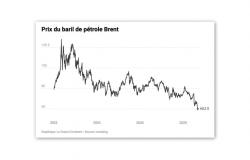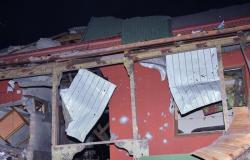The EU wants to cut any link with Russian gas by 2027. An ambitious bet in the face of persistent dependence. What obstacles await Europe?
Imagine an entire continent determined to turn your back on an energy source that still feeds almost a fifth of its needs. It is the colossal challenge that the European Union has set itself by announcing that it wants to put an end to all imports of Russian gas by the end of 2027. A decision which resonates as a political response as much as economic, in a context where energy has become a major strategic lever. But how does Europe, still marked by historical energy dependence, intends to note this daring bet?
A historic turning point for European energy
Since the invasion of Ukraine in 2022, the European Union has multiplied efforts to reduce its dependence on Russian fossil fuels. This new proposal, unveiled in early May 2025, marked a decisive step. It aims to completely cut bridges with Russian gas, perceived not only as a resource, but also as a geopolitical weapon. The roadmap is clear: prohibiting new contracts and short -term contracts from the end of 2025, before stopping all imports two years later.
“The European Union sends a clear message: energy will no longer be a blackmail tool. »»
European Commissioner, May 2025
This plan comes as the share of Russian gas in European imports has already dropped, going from 45 % in 2021 has 19 % in 2024. However, the road to energy independence remains strewn with pitfalls, between commercial tensions, limited infrastructure and internal pressures.
Why this decision now?
EU’s decision is part of a tense geopolitical context. Since the start of the conflict in Ukraine, Russia has used its energy resources as a lever to influence European policies. Reducing this dependence has become a priority to guarantee the energy sovereignty of the continent. But it is not only a question of politics: European citizens and companies, faced with volatile energy prices, demand lasting solutions.
In 2024, about 20 billion cubic meters Russian liquefied natural gas (LNG) were imported by the EU, representing 20 % of total LNG imports. This figure, although reduced to previous years, shows that Russia remains a key player. The EU must therefore act quickly to diversify its sources of supply while avoiding an outbreak of costs.
European plan stages
The EU plan is based on a two -step strategy, designed to minimize the disturbances while sending a strong signal:
- At the end of 2025: Prohibition of new contracts. This includes short -term contracts, often used for LNG, in order to limit long -term commitments with Russia.
- At the end of 2027: Total importance of imports. All Russian gas flows, whether they go through gas pipelines or ships, must be stopped.
This progressive approach aims to give the Member States time to adapt. However, discussions between countries are likely to be animated, because not all of them share the same degree of dependence or the same priorities.
The challenges of an energy transition
Ending the imports of Russian gas is not an easy task. One of the main obstacles is the diversification of sources of supply. The EU has turned to LNG, especially from the United States, which now represent 45 % of European imports. But this solution is not without risks.
LNG, although useful to compensate for the drop in deliveries by gas pipelines, poses logistical problems. Regazéification terminals, such as those in France, are already asked for full capacity. Increasing imports would require massive investments in infrastructure.
-In addition, trade tensions with the United States complicate the situation. Some European officials are afraid of replacing an dependence on Russia with another towards the United States, especially in a context where political pressures encourage increases of American LNG.
France, a key actor
France plays a central role in this equation. With its five regzéification terminals, it has become a major gateway to LNG in Europe. In 2024, French imports of Russian LNG jumped 81 % compared to 2023, generating payments estimated at 2.68 billion euros to Russia. This situation places the country in a delicate position: how to reconcile its European commitments with its immediate energy needs?
Some players, such as large energy companies, have already warned that banning Russian gas could lead to prices. This perspective worries consumers, still marked by fluctuations in energy costs in recent years.
Towards a greener energy?
If the EU wants to succeed in this turn, it will have to invest massively in the renewable energies and energy savings. Environmental organizations argue for a reduction in overall consumption and an accelerated development of solar and wind infrastructure. But these solutions, although promising, take time – a luxury that Europe does not always have.
| Strategy | Benefits | Disadvantages |
|---|---|---|
| LNG imports | Speed of implementation | Dependence on new partners |
| Renewable energies | Long -term sustainability | Heavy investments and deadlines |
| Energy savings | Reduction of needs | Change of habits |
This table illustrates the options available, but also their limits. The EU will have to find a balance between short -term solutions and long -term vision.
Member States reactions
Not all European countries are on the same wavelength. Some, like Hungary, maintain close energy relations with Russia, which could complicate negotiations. Others, like the Baltic countries, firmly support the end of Russian imports, which they perceive as a strategic necessity.
Debates in the European Parliament and between the Member States will be crucial. The fear of a new energy crisis, similar to that of 2022, hovers on discussions. However, the EU seems determined to move forward, carried by a collective momentum to reduce the Russian influence.
A message to the world
By announcing this measure, the EU is not only addressed to Russia, but also to the rest of the world. She affirms her desire to become a leader in the energy transition, while strengthening her resilience in the face of geopolitical crises. But the path is still long, and the next few months will be decisive to transform this ambition into reality.
“We owe our citizens and our companies to build an independent energy future. »»
President of the European Commission, May 2025
While 2027 approaches, Europe is at a crossroads. Will she succeed in freeing herself from Russian gas while preserving economic stability? One thing is certain: this decision marks a turning point, whose repercussions will be felt far beyond European borders.








